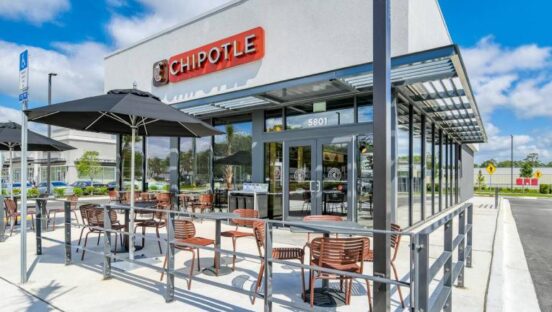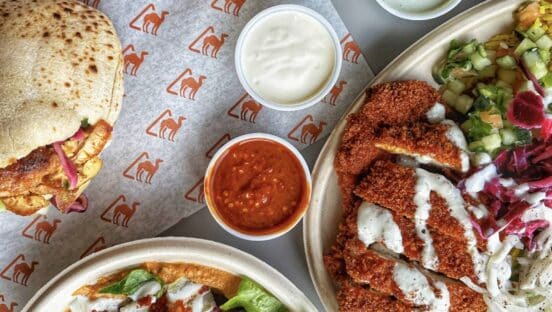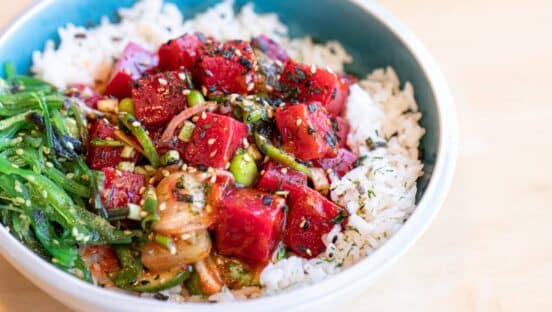







Draw guests in
If you’re a marketer or a restaurant owner, you know your restaurant’s content strategy is crucial to marketing your offering effectively. Here’s a handy guide to creating and using quality content to promote your restaurant business online.
1. Write for your audience
Before you start writing, you need to know who you’re talking to—i.e. who your target audience is. If you’ve been established for a long time, you should know your main demographic well, however if you are just starting out, there are a few points to consider.
Think about where you’re located, your price points, and your business model. This should give you an idea of who you should be appealing to. You can also enable demographics and interests on Google Analytics to see who is engaging with your website.
Once you understand your restaurant’s core target audience, you need to make sure your content’s tone, voice, and imagery reflects this. Using colloquial, exaggerated language might not be right for a 5-star, black tie restaurant in the city, but may work very well for a relaxed, local fast casual.
2. Perform effective keyword research
In order to gain an organic audience moving forwards, you’ll want to have an effective keyword strategy as part of your overall content marketing strategy. To do this effectively, it will need to involve the usage of some industry recognized tools. However, if you don’t have the budget to pay for these, there are other ways you can identify some target keywords.
Google Ads’ Keyword Planner is by far the favorite free keyword research tool, not only for keywords themselves, but for competition levels as well. Alongside this, you can also make use of Google Autosuggest and related searches at the bottom of the search engine results pages. This often gives you some ideas for what to write about. The key to good keyword research is finding a niche with ‘longer-tail’ keywords—you want to answer questions and provide great, useful content.
3. Create a content calendar
By creating and maintaining a content calendar, you can make sure your content is working in line with different seasons, holidays, and days of note. This means your content remains fresh and on trend for you to outreach via social, email and online.
This is particularly important for promotion on social channels, as you can use trending, seasonal hashtags and make note of unique, food and drink awareness day trends (e.g National Grilled Cheese Sandwich Day).
4. Measure the success of previous content
In order to create great content for your restaurant online, you need to be able to analyze the success of your previous content. If you aren’t listening or paying attention to what your customers engage with on your site, how can you replicate this in the future? Google Analytics is the best tool for the job here.
Pay close attention to your users’ behavior on site—look at bounce rate, average time on site and, where they are landing and leaving.
5. Think about the buying cycle
It is important to keep the different stages of the buying cycle in mind when writing content for your site. Of course, the end goal will be to get table bookings or visits, but there are many other stages you can target your content at. For instance, during the investigative stage.
This stage is invaluable when it comes to increasing awareness about your restaurant. People want to know about new menus … how you cater to specific dietary requirements etc. For instance, you may have launched a new vegan menu—you can target your content at the customer researching nearby places that serve vegan dishes.
6. Local content is your friend
As a restaurant, local SEO is crucial in order to gain visibility to your target audience. Part of what makes local SEO so powerful is effective local content marketing.
Local content differs from other content in that it focuses on a specific location. By creating informative local guides, infographics or blog posts that focus on the local area your restaurant is based in, you are more likely to reach those in the local area.
7. Think bigger than blog posts
Producing content doesn’t just mean endless blog posts. Switch up your content types and keep your audience engaged. Posting case studies and testimonials allows you to showcase your happy customers and highlights the positive experiences others have had at your restaurant.
If you have access to a designer, why not try creating video content? After all, what better way to showcase your new summer cocktails or sharing boards? Eye-catching, easy to digest visuals are likely to go down better than a block of writing and an image.
Once you understand your audience, have a solid keyword strategy behind you, and start carefully planning your content to reach your audience at the right time, your restaurant will start to reap the benefits of an effective content strategy in no time.
Sarah Richards is a professional writer and a regular contributor to Essay Writing Service UK’s blog and various business publications. If you’re interested in getting in touch with Sarah, you can find her on Twitter.












